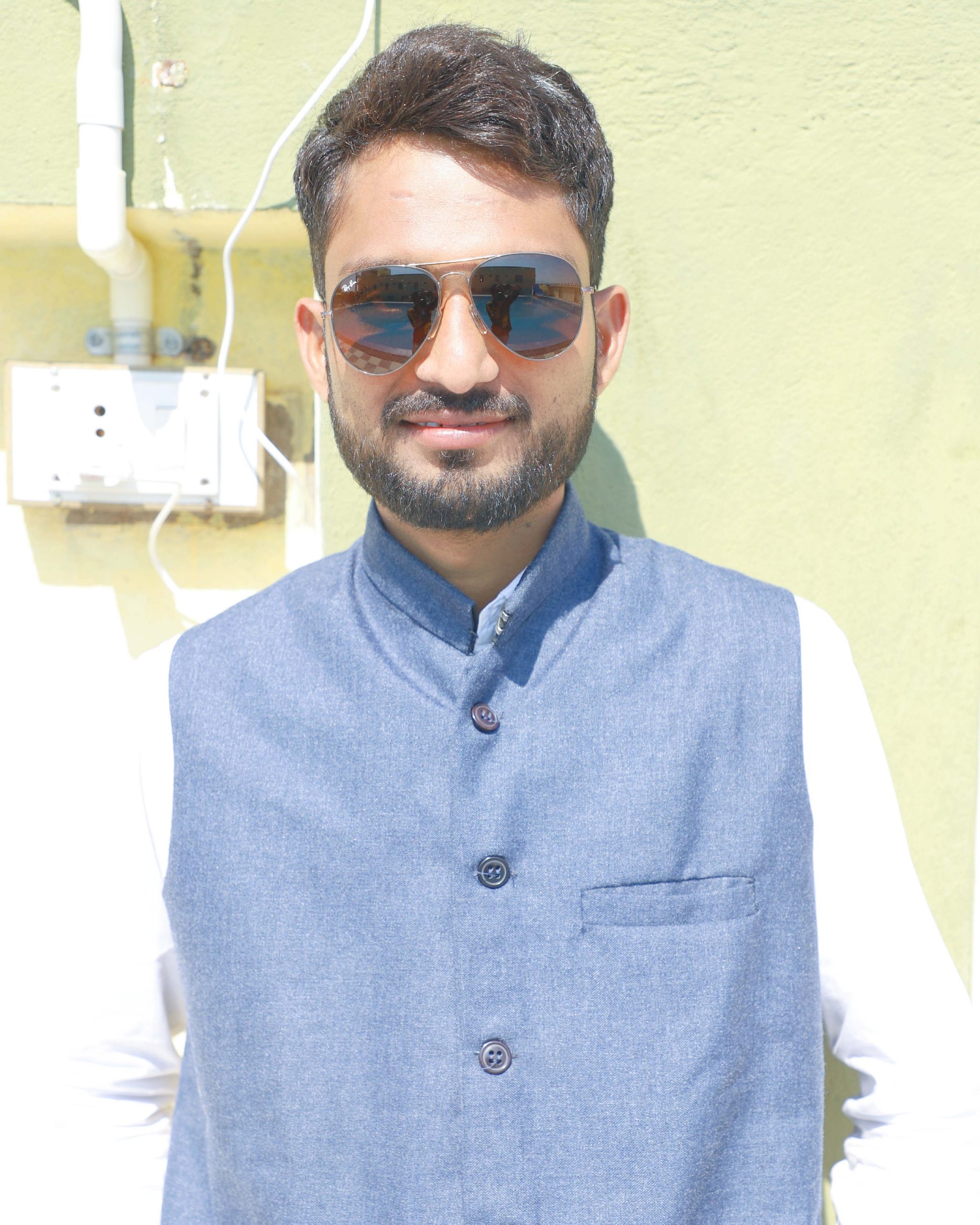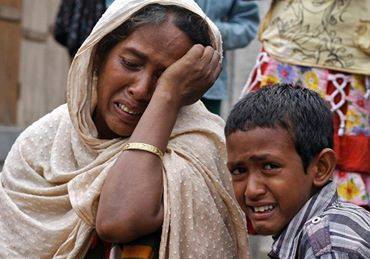Neeraj Bunkar
Navodaya Vidyalayas, established under the vision of the former Prime Minister Shri Rajiv Gandhi, were conceived to ensure holistic development of underprivileged children from rural areas and promote social justice. Presently, there are around 700 such residential schools across India, aiming to provide quality education to marginalized students. However, instances of caste-based discrimination within these institutions have raised serious concerns, leading to tragic outcomes like suicides. And yes, this institution has been highly successful in achieving its objectives, and I am a living example of its triumph. Many students like me have been provided with the opportunity to receive free and high-quality education by this institution, which is quite challenging to acquire for students from rural, impoverished, and marginalized backgrounds elsewhere. However, it is also essential not to forget that Navodaya is not a separate realm from society. I have often heard my fellow Navodaya classmates say that “Navodaya is like heaven”, where concepts like caste and casteism hold no significance. Everyone coexists harmoniously, even sharing meals together, and so on. Navodaya has been defined as a utopian place where everything is extraordinarily positive, and any negativity lies beyond the walls of Navodaya.
Due to these exaggerated statements, whenever an individual like me attempts to share their personal experiences, whether from within Navodaya or outside, they are labelled as “casteist”. Consequently, this labelling, along with the pronouncement that they have shattered the beautiful and pristine sense of brotherhood within Navodaya, leads to their ostracization. In this article, I will discuss a recent incident at the renowned Paota Navodaya, drawing from my own experiences.
I recently came across a video on Twitter in which some students from Jawahar Navodaya Vidyalaya, Paota (Jaipur), are discussing an incident. The incident they are talking about pertains to the suicide of a student from their own school. According to these students, Sachin Kuldeep, a student of the tenth grade who hailed from the Dalit community, hanged himself due to caste-based harassment by a teacher of the Savarna (privileged) caste. Initially, the teacher scolded the student for a minor mistake, then proceeded to subject him to caste-based insults. When the student admitted his mistake and asked the teacher for an apology, the teacher’s ego got hurt. The teacher hurled caste-based slurs at him three times and said, “Do whatever you want, you don’t know who I am. I have a powerful influence, even the principal and police cannot harm me. My arrogance is inherited, and I will reduce you to a state where your family will beg me for forgiveness, and they will keep running around the courts”. The student was slapped multiple times, and upon returning to the hostel, he neither ate nor drank. Instead of consoling him and encouraging him to eat, the teacher compared him to a small pebble and referred to himself as a mighty rock, emphasizing his ‘low’ and ‘insignificant’ status repeatedly, planting casteist notions in the student’s mind. This led the student to contemplate his own worth and eventually, after everyone else had gone to sleep that night, he took his own life.
However, this is not mere suicide; it is an “institutional murder”, a phenomenon not unfamiliar within these institutions. We witnessed the most prominent instance in the case of Rohith Vemula, an outrage that shook the nation. The list of such incidents is extensive, including names like Payal Tadvi (BYL Nair Hospital), Indra Meghwal (Saraswati Vidya Mandir, Jalore), Darshan Solanki (IIT Bombay), Senthil Kumar (University of Hyderabad), P Raju (University of Hyderabad), and others, some of whom have come to public attention. Since I intend to delve into caste-related cases associated with Navodaya Vidyalayas in this article and corroborate these facts by sharing my own 7-year experiences, it’s worth mentioning that the incident cited at the outset is not an isolated one. Instances of such caste-based harassment have led to a student’s tragic suicide, which can indeed be accurately categorized as a form of institutional murder.
This incident is reminiscent of other events where, on the date of January 1st in the current year, a 14-year-old Dalit student at Navodaya School in the Siddhi district of Madhya Pradesh, India, committed suicide. Allegedly, the student left behind a note accusing his Brahmin teacher of subjecting him and his parents to caste-based insults, leading him to take such a drastic step due to the distress caused by this caste-based discrimination. According to records obtained through the Right to Information (RTI) Act by The Indian Express,out of a total of 49 suicides examined from 2013 to 2017, half were by Dalit and Adivasi students, with a majority of them being boys.
I pursued my education from this institution from 2007 to 2014, spanning grades 6 to 12. I, too, have experienced the bitter taste of such caste-based discrimination, which I shall now share here. When I was in 7th grade, one day during a music class, all of us gathered in the music room to practice music with our music instructor. Our teacher was engrossed in playing the harmonium, accompanying Aziz Nazan’s qawwali “Chadta Suraj Dheere Dheere”,and we all were singing along with him in chorus. I was seated at the back, and there was a stout, fresh-faced boy sitting behind me. After a short while, he lost interest in the music class and began to mockingly mention my caste in my ears in a derisive manner.
I ignored him several times and even requested him to stop, but his derogatory remarks about my caste persisted. The high pitch of the tune in the classroom and our positioning at the far end didn’t draw anyone’s attention to this matter. However, when I could no longer bear this affront and my patience wore thin, I swung around with full force and delivered a powerful punch to his nose. With a forceful gush of blood, he stumbled back and fell onto the tambura kept behind him. This strange melody (action) in the midst of the musical atmosphere silenced everyone, and all attention turned to the Savarna boy. He was brought back to his senses, while I trembled inwardly.
Our Brahmin teacher inquired about the incident with the boy, and he pointed towards me. A mere gesture was enough for him to understand. The teacher immediately grabbed me and began to thrash me mercilessly, without even attempting to comprehend the situation. He didn’t make any effort to investigate the matter even once. After this incident, I remained in a state of shock for many days. This recurring incident underscores a series of instances wherein my caste identity, coupled with my status as a recipient of reservation benefits, became the subject of mockery by my peers within the school environment. Their derision stemmed from the perception that I was unjustly availing myself of these advantages without proactive effort, particularly in contrast to their own financial obligation of paying a monthly tuition fee of 50 Rs.
However, addressing such issues, as suggested by some, involves the appointment of one or two counsellors in each school; indeed, in certain schools, this approach has been implemented. Nevertheless, I hold the belief that the challenge at hand is much more extensive, surpassing the scope of these measures. From my standpoint, the crux of the matter lies in dispelling the notion that “Navodaya is a casteless institution”. It’s imperative to recognize that this issue is substantial and deeply rooted within Navodaya, impeding any easy resolution. This is because the caste biases prevalent in society can also permeate the mindset of the counsellors, who, despite their role, might struggle to remain completely impartial due to their own potential caste prejudices.
Caste is deeply ingrained within the human psyche, spanning across geographical and cultural boundaries, so much so that it continues to have an influence even when individuals migrate from one society to another, be it within India or abroad. This persistent connection to one’s caste identity often leads individuals to carry and showcase a sense of pride associated with their caste, regardless of their location or environment. This phenomenon is evident even among educators from the Navodaya school system, who hail from various educational institutions across India, maintaining ties not only with the broader society but also with their specific caste groups.
Navodaya schools enrol students from the age of 11, and these students experience a crucial period of growth until they reach 18 years of age. However, prior to entering the Navodaya system (before the age of 11), students receive formal and informal training and education within their respective caste-associated communities.Consequently, when a new, ostensibly caste-neutral society is established within the framework of Navodaya, it encounters resistance due to the deeply ingrained teachings and training received by its members from their respective caste-based backgrounds. Despite these challenges, the narrative of “Navodaya being an excellent place” remains persistent, often reiterated without acknowledging the inherent complexities.The suppressed caste-based pride of educators manifests in various incidents, serving as a reminder of their cultural identity and creating instances where caste-related ego comes to the forefront. This situation underscores the intricate interplay between caste affiliations and self-perception, even within so-called caste-neutral settings like Navodaya schools.
There is a pressing need within the Navodaya educational system to enhance caste diversity among educators. Additionally, it is advisable to organize training sessions that encourage teachers to transcend their caste identities and cultivate exemplary humanistic teaching practices. This initiative should also provide comprehensive insight into the stringent legal provisions against discriminatory behaviour. While it is acknowledged that apprehensions about legal consequences may not deter them due to their preference for “casteocracy” over democracy and legal principles, the process of fostering their humanistic transformation remains crucial and should be continued. Moreover, in cases of such incidents, swift and severe punishment should be meted out to the oppressor/accused to mitigate the intensity of their caste-based arrogance.Similar training programs should be arranged for students to enable them to become not only recipients of quality education but also compassionate individuals.
Along with this, in my opinion, it is appropriate that at the Navodaya level, a distinct commission or redressal committee should be established for SC/ST individuals. This entity would be responsible for expeditiously addressing instances of caste-based harassment across all Navodaya institutions throughout India. Through periodic reviews and assessments, this committee would continually monitor the prevailing situation, release reports, and take prompt actions as needed.
~~~
Neeraj Bunkar, PhD Scholar at the Department of English, Linguistics, and Philosophy at Nottingham Trent University, Nottingham, United Kingdom with a specific interest in Caste, Dalit, Rajasthani folklore, Oral History and Cinema.










